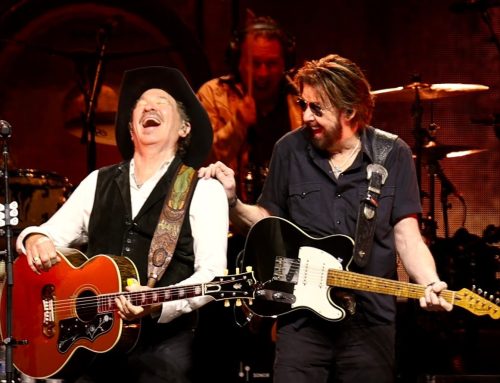
1930
The first World Cup soccer competition began in Montevideo, Uruguay
1982
The first All-Star Game played outside the United States was played this day in Montreal, Canada
The National League won for the 11th consecutive year, defeating the American League 4-1.
1985
The event was the Live Aid concert for African famine relief. The place was Philadelphia, PA and it was also, London, England.
The sixteen hour concert featured some of the biggest names in rock music including Mick Jagger, Tina Turner, Madonna, Bob Dylan and Paul McCartney.
The audience was equally as big – 162,000 attended the concert and another 1.5 billion viewed it on TV.
Live Aid raised over $100 million.
and then lastly…
The Great Flood of 1951
Black Friday In Kansas
During the period of July 9-13, some areas in the Kansas River basin received 18.5 inches of rain
The flooding started above Manhattan on the Big Blue River.
Poyntz Avenue in downtown Manhattan was eventually covered with eight feet of water.

Poyntz Avenue/Kansas Historical Society

Two men rowing down Poyntz Avenue/ Kansas Historical Society
From the Kansas Historical Society:
“Downstream flooding continued in Topeka, Lawrence, and Kansas City. In Topeka alone about 7,000 buildings were damaged or destroyed. The rising river waters caused transportation throughout the river basin to come to a halt. Roads were washed away and railroad tracks moved. Communication lines were downed. Altogether one hundred sixteen cities and towns were affected; 85,000 persons had to be evacuated from their homes; 22,000 residences in the river basin were flooded and nearly 2,500 completely demolished; 336 businesses were destroyed and more than 3000 flooded. The flood didn’t just affect just the towns and cities, 10,000 farms also suffered damage. Topsoil from fertile fields was removed by the flood waters, while heavy deposits of sediment and sand were left in its place. The flood claimed 28 lives as more than 1 million acres were flooded. Total losses in the Kansas River Basin and in Kansas City Missouri and Kansas City Kansas exceeded $725,000,000.”
What measures were taken to prevent another flood of this magnitude from happening?!
“Business men and residents living downstream along the Kansas River increased the pressure on government officials to protect them from another flood. On the other hand vigorous opposition was directed at officials from the local to national levels. Five small Kansas towns were to be inundated (Garrison, Stockdale, Randolph, Cleburne and Bigelow). At least four other towns would lose substantial earning power (Frankfort, Irving, Manhattan, and Marysville). Three thousand residents of the Blue River Valley would be affected by the dam. Fifteen hundred of these were farm families. Many of these had cultivated these family farms for more than 85 years. Transportation facilities, including two railroads would have to be abandoned or moved. Numerous state highways, county and township roads would need relocated. Schools, churches, cemeteries, and public utilities were to be moved. Approximately 55,000 acres of the fertile farm land would be inundated.
The people of the valley fought to maintain their existence but in the end Tuttle Creek Dam and reservoir was built. Construction was completed and operation began July 1, 1962. Total cost was $80,051,031. The Army Corps of Engineers estimates that since opening, Tuttle Creek Lake has prevented over three billion dollars in flood damages. However, the building of reservoirs along the drainage area did not bring a stop to the flooding. Again in 1993, the Kansas River and the Missouri River basins flooded. This time however, no lives were lost.The struggle between man and nature continues.”
Thank you to the Kansas Historical Society for the photos and article/description
-Tyler Jackson






